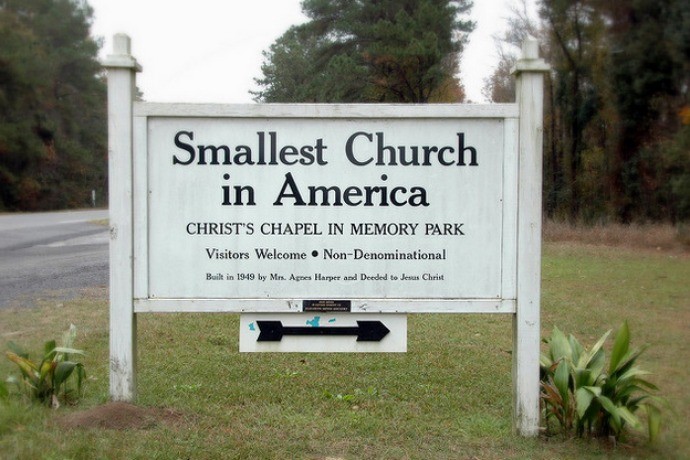We have long known, as sociologist Mark Chaves says, that “most congregations in the United States are small, but most people are in large congregations.”
Indeed, a recent study shows that in recent years megachurches have grown while the size of the “average” church in the U.S. has shrunk from an average attendance of 100 people in 2006 to 76 in 2012.
But what is also clear from the research, as in a recent report from Duke University, is that the larger the church, the less engaged the congregants are in the life of the church.
Nevertheless these and other reports imply that the future of Christianity lies in the megachurch, with its multitude of options for members and visitors, and the ease of entry that these churches afford. The assumption is that people are attracted to the variety of programs and the top-notch worship services, which then leads to deeper involvement in the life of the church through small groups and other types of programming.
At the same time the picture of smaller churches painted in these reports is that they are located in small towns across the country that are themselves emptying out.
So we have, the reports imply, two types of churches: first there’s the dying small-town church, complete with elderly pastor and greying (mostly female) congregation; second, there’s the vibrant, innovative and option-loaded megachurch that draws congregants from a broad geographic area into its spiritual vortex.
But is this an accurate picture of churches in America?
In our current project at the USC Center for Religion and Civic Culture (CRCC), we have interacted with pastors and members of megachurches, mid- sized and small churches all around Los Angeles and Seoul, South Korea. We have watched as megachurches have been founded and grown, while other megachurches have shrunk or diminished. In at least one case, we’ve seen a megachurch go out of business altogether and then re-form as a much smaller church. And, we have observed several thriving and innovative churches that are small by design, allowing them to nurture a spiritual community while serving the communities that host them.
So while reports suggest that big is somehow better, this isn’t the whole story.
These smaller community-minded churches may not appear to be anything really new—but we must remember that innovation is not the same as invention. It can be innovative to adapt or rediscover something old, to invite renewal.
For example, if you look at older urban areas, you will find many examples of smaller neighborhood churches that have minimal to zero parking. In L.A., the car capital of the world, this suggests that at the time these churches were established people walked or drove the several blocks from their homes to church. The scale of the buildings themselves prohibited these neighborhood churches from becoming big enough to annoy their neighbors with an influx of churchgoing outsiders.
What we’re finding is a renewed emphasis on the local community that is attracting mostly younger, college educated congregants—not the blue-haired members suggested by the tiny small-town churches usually cited in these reports. These new, smaller churches are capitalizing on the appeal of urban areas to younger people. They offer both the urban vibe and the opportunities for creating smaller Christian communities and the many social outreach opportunities that inevitably present themselves in cities.
And, as a function of their size, it is much harder to be a “free-rider” in these churches than it is in most megachurches. The spiritual community might be smaller, but it asks for deeper involvement from its members.
None of this is to suggest that there aren’t urban megachurches in this mix as well. I could list several in Los Angeles, New York, Chicago, or any other large metropolitan area, that are attracting large numbers of young, college educated congregants. Yet in many cases, these churches represent the problem faced by any mass event: it is easy to attend, and equally easy to avoid deeper commitment to the life of the church.
The point is that what is often missed by these large scale surveys—and the media reporting of them—is that megachurches are not the only game in town. Smaller churches, operating in the urban context, are also attracting newcomers.
Megachurches are, by definition, a big deal. But if we look to them as the source of all things innovative, we are contemplating the future of American Christianities through a narrow lens.





